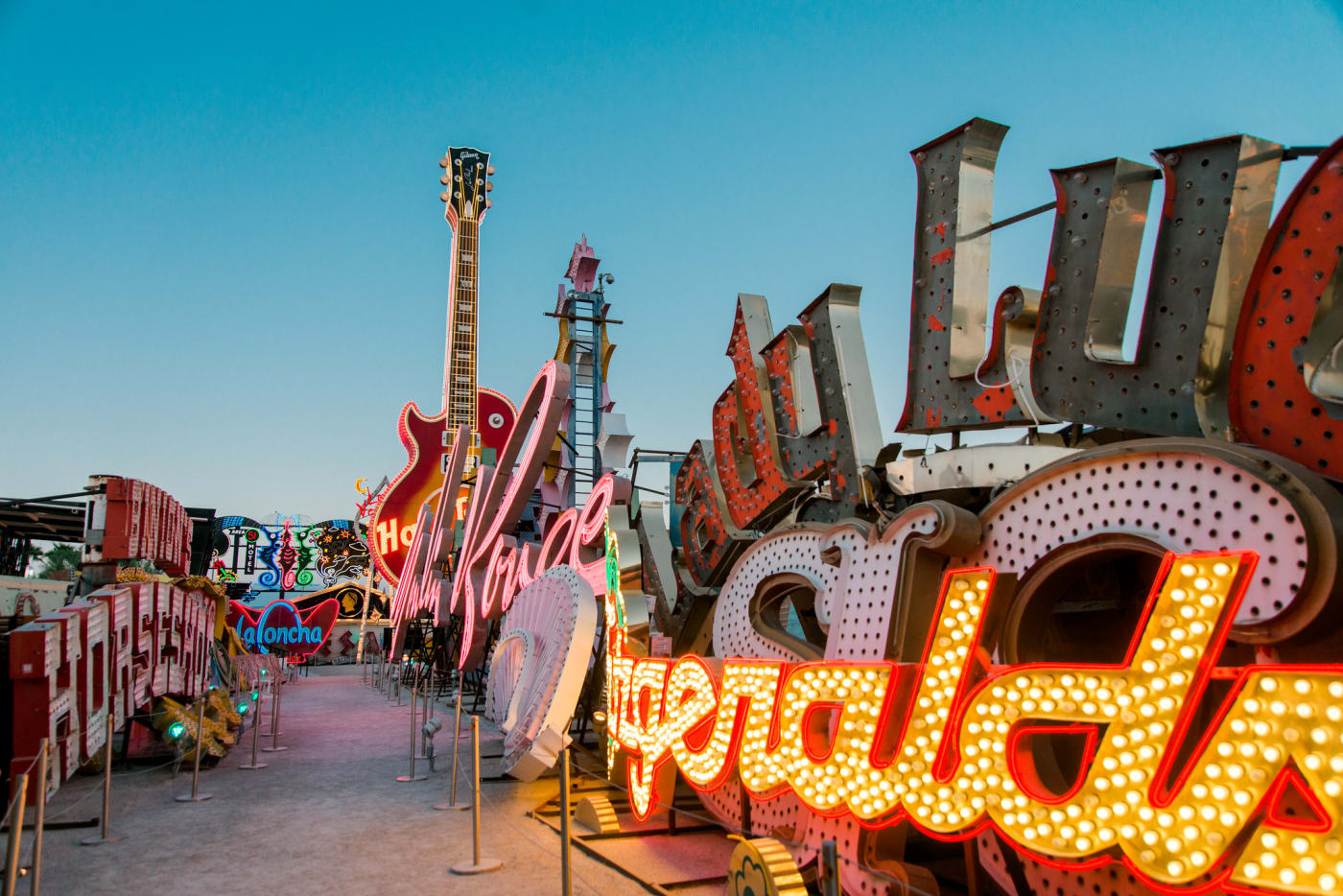Sahara Las Vegas Hotel & Casino

Please position yourself in front of the Sahara Las Vegas Hotel & Casino signage, facing away from the Hard Rock Café guitar sign.
When gambling halls and casinos first began to open along the Las Vegas Strip in the 1940s and 1950s, they were essentially part of the sidewalk, with their signs set at pedestrian-level to target passersby. As casinos and sign designs evolved, a large number of businesses essentially became walk-in sign structures themselves, offering air-curtain entrances for guests arriving on foot from the nearby railroad depots or from the parking lots behind the gaming establishments. In the early 1970s, Las Vegas’ approach to sign design took a new turn, with the introduction of the porte-cochère. Usually an extension of the building itself, a porte-cochère is a structure that covers a main entrance large enough for vehicular traffic to pass beneath, allowing passengers to enter or descend from a vehicle while protected from the elements.
The signage in the Neon Boneyard from the Sahara Las Vegas Hotel & Casino originally sat above an entrance as part of an extensive renovation the property underwent in the 1990s. These renovations effectively married the work of both architects and sign designers, and resulted in the introduction of a new façade for the property, as well as new illuminated signs and a large pylon. Contemporary sign architecture has continued to become larger and its lighting more pronounced as properties have vied for increased visibility. The porte-cochère continues to be a major focus of innovation in the ever-evolving field of sign design.









